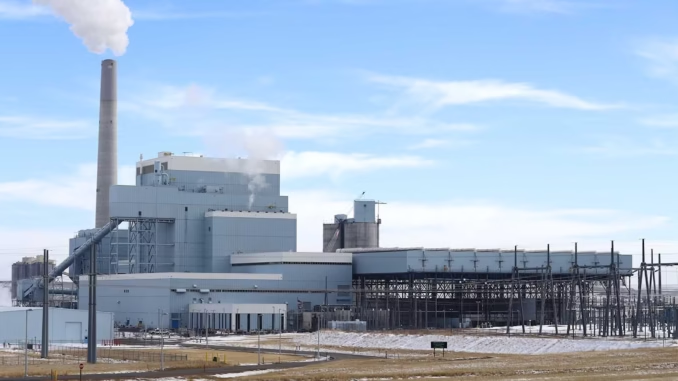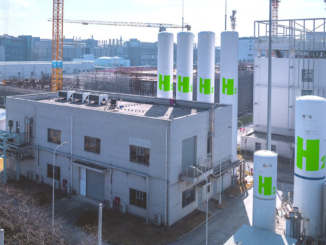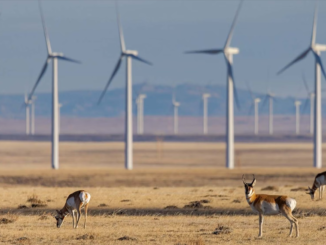
In a significant development for the U.S. energy sector, Wyoming and Basin Electric Power Cooperative have advanced plans to potentially build the first new coal-fired power plant unit in over a decade. On October 27, 2025, the Wyoming Energy Authority (WEA) announced a $4 million matching grant to fund a Front-End Engineering Design (FEED) study for adding a second unit to the existing Dry Fork Station near Gillette, Wyoming.
This move signals a potential revival for coal amid growing demands for reliable energy, with the study expected to evaluate technical, economic, and environmental feasibility over the next 12 to 16 months.
The Dry Fork Station, operational since 2011, is a 405-megawatt facility that burns sub-bituminous coal from the nearby Dry Fork Mine. Designed with expansion in mind, the plant already incorporates advanced emissions controls, making it one of the cleanest coal-fired stations in the country.
If approved, the new unit would mark the first coal plant expansion in the U.S. since the Sandy Creek Energy Station in Texas came online in 2013, and the first in Wyoming since Dry Fork itself.
Technological Innovations for Efficiency and Emissions Reduction
The FEED study will prioritize the selection of cutting-edge technologies to enhance burning efficiency while minimizing environmental impacts. Basin Electric has a track record of pioneering innovations, and this project aims to integrate high-efficiency, low-emissions (HELE) systems.
These include advanced combustion methods like low-NOx burners, which can reduce nitrogen oxide emissions by up to 40% when combined with re-burning techniques.
Fluidized bed combustion (FBC) systems, another potential feature, suspend solid fuels in upward-blowing air jets, improving combustion efficiency and cutting sulfur oxides (SOx) and NOx emissions by 90%.
To address particulate matter—a key concern in coal combustion—the project will likely incorporate scrubbers and electrostatic precipitators. Modern scrubbers not only target SO2 but also effectively reduce particulate matter, mercury, and hydrogen chloride.
New coal plants with such pollution controls can slash NOx by 83%, SO2 by 98%, and particulate matter by 99.8%, according to the National Energy Technology Laboratory.
Additionally, Dry Fork is set to host the world’s largest carbon capture facility, capable of capturing over 150 tons of CO2 daily for storage or utilization, further lowering the plant’s carbon footprint.
This aligns with broader Wyoming initiatives, such as oxy-combustion testing at other sites, which could enable near-zero emissions from coal burning. Cyrus Western, a former Wyoming legislator and current EPA regional administrator, emphasized the potential: “With the advent of modern technology and modern engineering, these coal burning units can be incredibly efficient in generating power, and be extremely effective in reducing emissions.”
Basin Electric spokesperson Dana Hager added that the study is a “cost evaluation” building on the cooperative’s history of technological leadership.
Impacts on the Local Economy
The proposed expansion holds substantial promise for Wyoming’s economy, particularly in the Powder River Basin region. Coal remains a cornerstone of the state’s fiscal health, contributing around 11.2% of government revenue and supporting thousands of jobs.
In Gillette, often called the “Energy Capital of the Nation,” the project could create high-quality, middle-class employment opportunities during construction and operation.
Rusty Bell, CEO of Energy Capital Economic Development, hailed the announcement as “absolutely wonderful,” noting surging demand for electricity from data centers and heavy manufacturers.
Ferroalloy companies, which use coal and local minerals for steel production, are eyeing northeastern Wyoming, potentially shifting operations from traditional hubs like Appalachia. This influx could diversify the local economy, which has faced challenges from declining coal production—down 17% since 2008.
Governor Mark Gordon underscored the broader implications: “This is clear proof that coal is not dead and a reminder that Wyoming’s strength has always come from our ability to innovate without abandoning our values.”
The initiative also ties into related projects, such as a CO2 feasibility study that could unlock 4 billion barrels of recoverable oil through enhanced recovery, further amplifying economic benefits.
Overall, Basin Electric estimates compliance with emissions rules could cost nearly $10 billion through 2035, but strategic investments like this aim to sustain coal’s viability while fostering growth.
Looking Ahead
If the FEED study yields positive results, construction could commence, positioning Wyoming as a leader in modern coal energy. Rob Creager, executive director of the WEA, described the effort as honoring “Wyoming’s legacy as a powerhouse in American energy.”
With federal support for carbon capture at Dry Fork and ongoing innovations, this step could pave the way for a more sustainable coal industry, balancing energy reliability, environmental stewardship, and economic vitality.
We are seeing a resurgence of sanity in consumers realizing that the climate hysteria has caused serious financial harm to many different people. In the war against coal, people are waking up to the fact that there are two types of countries moving forward. Those will be the countries that take energy policies seriously and implement the lowest cost kWh to everyone with the least impact on the environment, without Subsidies. And the other side will be those who practice the Net Zero Climate scare and try to keep printing money and go down the wind and solar route, which will not work in major grid deployments with our current technology.
Got Questions on investing in oil and gas? Tis the season for Tax Prep






Be the first to comment